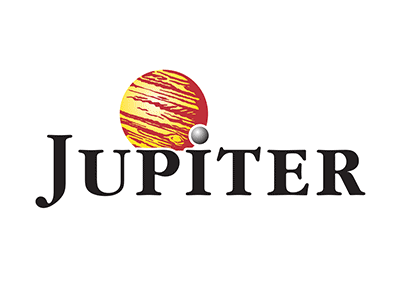Avinash Vazirani has one of the longest track records investing in India
The fund invests broadly across the whole Indian stock market
Long and short-term performance has been strong but has been volatile
This fund features on our Wealth Shortlist of funds chosen by our analysts for their long-term performance potential
How it fits in a portfolio
The Jupiter India fund aims to provide growth over the long term by investing in companies that are primarily based in India. The fund managers can invest in companies of all sizes and that operate in any sector, allowing them to take full advantage of opportunities on offer.
The fund’s focus on a single emerging country makes it a higher-risk option so it should only make up a small portion of an investment portfolio. We think it could work well alongside other Asian funds that focus on the wider region or as part of a broader globally diversified portfolio focused on long-term growth.
Manager
Avinash Vazirani has a wealth of experience investing in India. He began his investment career in 1994 and joined Jupiter in 2007, launching the Jupiter India fund shortly after. With such a long career focused on the Indian market, Vazirani has built up considerable knowledge of the country’s investment opportunities and wider economy. We view this depth of expertise as one of his greatest strengths.
Co-manager Colin Croft has worked alongside Vazirani since 2021. After joining Jupiter in 2006 as an equity analyst, Croft has managed funds investing across Asia and Emerging Europe. While we’re impressed by Croft having got to know him over the past few years, our conviction in this fund primarily lies with the experience of Vazirani.
Process
Vazirani and Croft believe India is one of the most exciting regions within emerging markets. As India’s economy and population continues to grow, plenty of opportunities for active fund managers are presenting themselves.
The fund managers use a ‘GARP’ (Growth at a Reasonable Price) investment philosophy to help narrow down an investable universe of over 6,000 companies. They seek companies that generate strong cash flow, are financially robust, and valued at a share price that doesn’t reflect their earnings potential. As a result, the fund tends to look ‘cheaper’ than the Indian market across several metrics.
The managers spend a lot of time understanding a company’s management team to ensure they’re run prudently. They also analyse trends, such as demographic change or government reform that could benefit companies in the long term.
The managers use a wide range of sources to help them generate ideas. Quantitative screens provide a daily feed of company information and performance. They also use external analysts and have regular conversations with members of Jupiter’s global emerging markets and Asia team. Initial public offerings have been plentiful in India recently, providing an additional pipeline of potential opportunities for the managers to explore.
The managers currently find plenty of opportunities in financials, where a quarter of the fund is invested. Healthcare and consumer staples businesses make up the next largest allocations in the fund. The fund includes companies of all sizes and currently invests 15.9% in small and medium-sized companies. Note that investing in smaller companies increases risk.
As long-term investors the managers don’t make frequent changes to the fund. That said, they’ve found some new opportunities over the past year. Investments were made in two banks, HDFC and Bandhan. The managers also bought shares in the natural gas company GAIL.
To make room for these new investments, shares were sold in companies such as Chennai Petroleum Corp, Olectra Greentech and One97 Communications.
Culture
Jupiter is a well-known asset manager and part of the UK’s FTSE 250 index of medium-sized companies. Fund managers are given autonomy to invest the way they see fit, but with an appropriate level of challenge from others in the business. The business setup allows Vazirani and Croft to focus purely on fund management and take a long-term view.
Fund managers at Jupiter are incentivised in line with the performance of their funds over various timeframes. We think this aligns their interests with those of investors and helps the managers to focus on delivering strong performance for clients.
ESG Integration
Jupiter’s approach to Environmental, Social and Governance (ESG) is fund manager led, so the fund managers are responsible for implementing ESG in their investment decisions. They typically approach ESG issues with a materiality-based approach, which means they focus on ESG risks most material to each company. The firm also subscribes to several third-party data providers (including Sustainalytics, RepRisk, ISS and MSCI) which offer information that fund managers can use in their research. Where red flags are raised, the managers investigate. The firm offers a small number of exclusions and sustainability-focused funds, including the longstanding Jupiter Ecology fund.
Fund managers are held to account for their ESG decision making and are frequently challenged on their ESG analysis by the in-house Governance and Sustainability team. The team is also available to provide specialist ESG knowledge.
We like that company engagement is not delegated to a separate department. Instead, the fund manager who made the decision to invest in the company leads engagement activity directly, which allows more meaningful and relevant engagement. Jupiter also votes at all shareholder meetings and provides a monthly voting record, available via its website, including rationale where it votes against company management. More information about the firm’s ESG policies, voting record and engagement case studies can be found in its annual Stewardship report.
While ESG considerations are integrated into the idea generation process, this fund is not an ESG-focused fund. Investors should be aware that Jupiter India has one of the highest ESG risk profiles of the funds under our research coverage. It’s also one of the most carbon intense and, as of November 2024, invested 17.29% in companies involved with the extraction of fossil fuels. Companies within the fund could face increased regulatory scrutiny and operational challenges, potentially impacting the fund's future performance.
Cost
The fund has an annual ongoing charge of 0.99%, but we’ve secured HL clients an ongoing saving of 0.30%. This means you’ll pay a net ongoing charge of 0.69%.
The fund discount is achieved through a loyalty bonus, which could be subject to tax if held outside of an ISA or SIPP. The HL platform fee of up to 0.45% per year also applies, unless the fund is held in a Junior ISA.
Performance
Since this fund launched in February 2008, Vazirani has delivered returns of 374.76%* to investors. This is ahead of both the MSCI India benchmark and the average of the IA India/Indian Subcontinent peer group, which returned 258.17% and 290.10% respectively. Our analysis suggests that this outperformance is down to the stock-picking abilities of the managers. Past performance isn’t a guide to the future.
The Indian stock market has been buoyant in recent years with many opportunities for growth. Over the last twelve months the fund returned 8.12%, although this was slightly behind returns for the benchmark and wider sector.
Investments in Godfrey Phillips and Fortis Healthcare, both long-term favourites of the fund managers, have been among the top contributors to performance. The fund managers sold some of their investment in Godfrey Phillips during 2024 as they took profits following the increase in share price. More broadly, investments in the energy sector have also been positive. Fund managers don’t get every decision correct and holding shares in companies such as Tata Motors and Prism Johnson were detractors to performance.
Annual percentage growth
Jan 2020 To Jan 2021 | Jan 2021 To Jan 2022 | Jan 2022 To Jan 2023 | Jan 2023 To Jan 2024 | Jan 2024 To Jan 2025 | |
|---|---|---|---|---|---|
Jupiter India | -1.41 | 38.09 | 2.36 | 48.49 | 8.12 |
MSCI India | 9.54 | 30.91 | -0.82 | 23.76 | 8.51 |
IA India/Indian Subcontinent | 5.90 | 29.32 | -3.01 | 23.61 | 9.24 |


